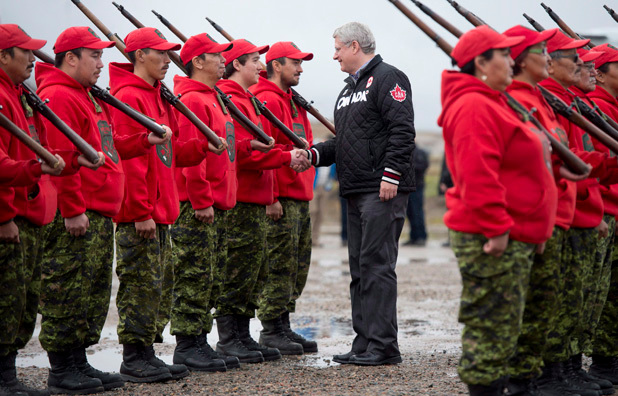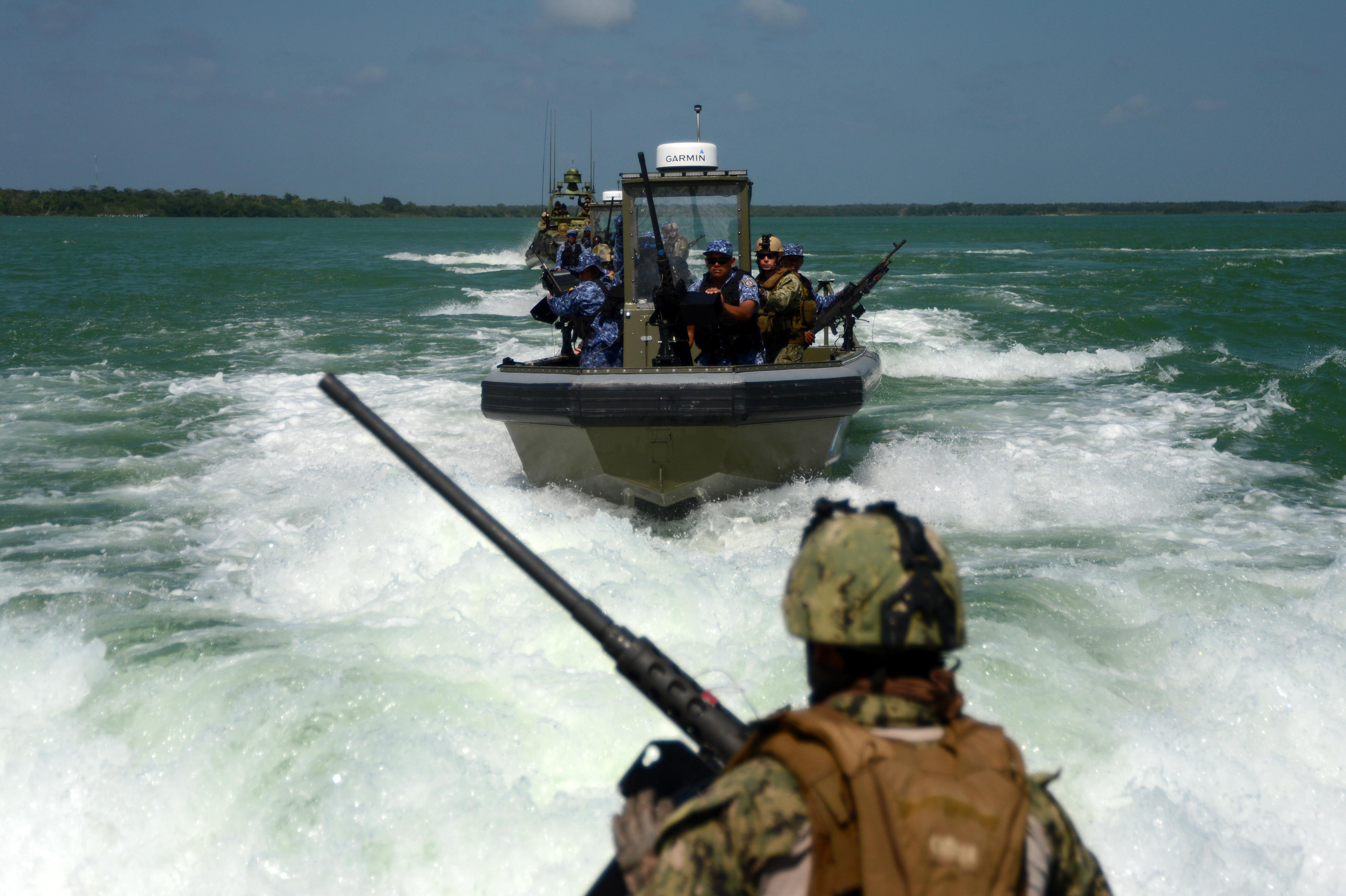Touraj Riazi had the honour of interviewing General (Ret’d) Raymond R. Henault who currently serves as the Chair of the Strategic Advisory Council and Chief Strategic Advisor at ADGA Group Consultants Inc. General Henault was a member of the Minister’s Advisory Panel for Canada’s Defence Policy Review. He previously served as Chief of the Defence Staff (CDS) from 2001-2005 and as Chairman of the NATO Military Committee from 2005-2008.
What long-term implications does Canada’s latest defence policy have on Canadian foreign policy?
Foreign policy spans several decades and normally dictates how a defence policy is developed and implemented, not the other way around. Canada’s last defence policy, the Canada First Defence Strategy, was limited by the fact that it was not adequately funded and could never be fully implemented. It was therefore very important that a new defence policy be published, especially with significant requirements for recapitalization and a focus on partnerships and contributions to alliances and coalitions of the willing.
When the Minister’s Advisory Panel started its work in April 2016, we observed, as did the Canadian Armed Forces (CAF) and the Department of National Defence (DND), that no foreign/global affairs policy review was occurring at the same time the defence policy review was being undertaken. We of course had no argument with the decision by the government not to undertake a parallel foreign policy review, but it required us to make some assumptions with respect to our work. We were encouraged, nonetheless, that Government committed to setting foreign affairs priorities during the defence policy review process.
Ministers of Defence, Global Affairs, and Public Safety met regularly during the policy review timeframe and a decision was effectively made by Government that foreign affairs priorities would be established while the defence policy review was underway. The resulting statement made by the Minister of Global Affairs on Canada’s foreign policy and its priorities the day before the Defence Policy was released, was very important as it demonstrated that Canada was stepping up to the plate and confirming that the new defence policy was harmonized with Canada’s foreign policy objectives.
The statement made by the Global Affairs Minister also added context and credibility to the new defence policy. It is important to note that Ms. Freeland made clear Canada is intent on restoring its leadership in the world and promoting its interests and values- which serve to contribute to a safer and more prosperous nation. In building on those themes, the policy also made clear that the links between global affairs and defence are very close. Ms. Freeland’s policy statement was timely and appropriate, but it needs to be acknowledged that current foreign affairs policy does not benefit from by the same rigorous review process as the new defence policy.
On another note, the consultation process used for Canada’s new defence policy – “Strong, Secure, Engaged” – was precedent setting in the way that it reached out broadly to Canadians, allies and partners in a very inclusive way. In order to solicit views and recommendations on the new defence policy, there were round-table consultations across Canada and abroad alongside the extensive use of social media. It was long overdue. Frankly, 1994 was the last time that a public consultation process was undertaken. It should also be noted that this was the first time that a Minister’s Advisory Panel was appointed to assist and advise the Minister of National Defence with the defence policy review.
In the end, the new defence policy published by Canada was a huge success and is harmonized with Global Affairs’ current priorities and policy, rightfully so.
Is the CAF sufficiently funded and adequately equipped to address challenges to Canada, in the context of a policy that emphasizes a shift away from expeditionary operations to more peacekeeping and disaster relief operations?
From my perspective, it is sufficiently funded. As a member of the Minister’s Advisory Panel, I was pleased to see the government committed to a long-term funding profile that is accounted for and ‘locked’ into the Government of Canada’s financial framework. There was a shift away from funding formulas used in the past to a broad-reaching accrual method of accounting. I do not pretend to understand everything about accrual funding, but in the most basic terms, it identifies and accounts for the cost of capital procurement, especially those projects identified as major capital projects, from cradle to grave. It provides much better assurance than previous methods of identifying costs that the funding allocated to a project will be available throughout the life of the project, including implementation. Accrual funding methodology is a great feature of this new defence policy.
The policy considers a 20-year horizon with many of the funding formulas extending beyond that timeframe due to the long-term nature of some of procurement projects such as ships, under the National Shipbuilding Strategy, or new fighter aircraft. The new policy also commits to a significant increase in defence spending, from its current level at $18.9 billion to $32.7 billion by 2026-27. That is around a 70% increase over time. Additional commitments to allocate $48.9 billion over the next 20 years for critical projects was also a key feature of this policy.
Enhanced funding commitments also include Canada’s contribution to alliances such as NATO, where there has always been some criticism of countries who do not meet the 2% target (which most NATO nations do not meet; only five do). After the policy has been fully implemented, Canada’s contribution to NATO as a percentage of GDP will grow from where it was at 0.99% (2013-2014) to 1.4%. This increase would be in keeping with the commitments made at the Wales Summit, which called for all NATO nations to move toward that 2% target. Each individual nation must determine its ability to meet the target, but a 0.4% increase by Canada represents a reasonable commitment to increasing defence spending as agreed to by NATO nations. It will also serve to increase Canada’s credibility within NATO.
An area where Canada will excel in its contribution to NATO in years ahead is the degree to which Canada will meet and exceed the NATO target on major equipment spending. This was frequently reinforced during Advisory Panel deliberations by Bill Graham and others. NATO sets this target at 20%, while Canada will reach 32.17% once all the planned projects have been completed. This will further enhance Canada’s credibility in the NATO family.
Finally, many of these spending requirements will be directed at emerging technologies in areas such as cyber, space and remotely piloted vehicles. I am therefore very comfortable with the funding commitments made in the new defence policy.
Since the policy—appropriately—examines Canada’s force structure from its present state all the way to 20 years from now, the big challenge remains its actual implementation. I have not seen the implementation plan yet but know it is being developed and will likely be in place by next spring (2018). A Defence Investment Plan that narrows in on the next 10 years is also being developed and will be released early next year.
Having also attended a briefing given by the Chief of Defence Staff (CDS) a month ago to an extensive group of defence and security stakeholders, I can affirm the Canadian Armed Forces are working diligently on the overall Implementation Plan. The CDS made it very clear that their work is being done very deliberately and in full consonance with the new defence policy. The resulting plan will address all of the objectives identified in the new defence policy, with an early emphasis on those regarding people and their families. This will ensure that a People First approach is firmly embedded in the Implementation Plan.
I also believe the assessment that there is “a shift away from expeditionary operations to more peacekeeping and disaster relief operations” is not entirely correct. Indeed, there is a significant expeditionary component to the policy in the way that it has been crafted. The very novel approach that was taken with the “Anticipate, Adapt, Act” portion of the policy also ensures that CAF missions are very well articulated. NORAD and continental defence are also included as a strong component of the missions, which have an inherent continental/international dimension. The policy also commits the CAF to lead or contribute to NATO or coalition efforts, as well as contribute forces to international peace operations. Significantly, the new defence policy clearly establishes the degree and durations for the CAF to conduct operations concurrently.
From my perspective, the new defence policy calls for an all-encompassing capability which reinforces the need for the CAF to be manned, trained and equipped to conduct peace, stability and security operations on a global basis, across the spectrum of conflict from humanitarian and disaster response to combat operations. That is where the new defence policy is a vast improvement over the Canada First Defence Strategy, as ambitious and well-intentioned as it was.
Can the described shift to accrual accounting also affect a system of procurement that has been problematic for Canada’s defence?
I would not tie the two together as directly, although the procurement system was indeed in need of an overhaul. During the roundtables in 2016, we continually heard from industry and other representatives that procurement is broken. That assertion was a little extreme and I would disagree with its premise. There is no doubt that stalled procurement projects become very frustrating for industry, because there is a cost to everything and the impact of delays is significant across the board. Industry therefore clearly expressed its desire for an improved procurement process- one that has a much more predictable funding mechanism applied to it- and that is what this new accrual accounting system delivers.
Additionally, problems with procurement are mostly visible with large projects. If you talk to RAdm (Ret’d) Pat Finn, the Associate Deputy Minister (Materiel) – ADM (Mat), he will reinforce that about 80-90% of all the projects prosecuted by Public Services and Procurement Canada (PSPC) go very smoothly.
However, the procurement system has suffered significant delays because of schedule shortfalls. The requirements and funding estimates for projects stay on track, but the schedule is often difficult to manage because of delays caused by the cumbersome approval process and the difficulties involved in navigating the process through multiple departments. There is already an initiative underway to reduce the timelines for low risk projects by 50%. This will significantly reduce the challenges created by schedule delays.
Currently, a significant amount of innovative work is being undertaken by procurement practitioners to streamline and improve the overall procurement process., Enhanced levels of financial authority are being provided to the Minister of National Defence for project approvals. In the past, the Minister’s approval authorities have been relatively low and even a project under $100,000 could be stalled out for lengthy periods by an approval process that requires approvals across several departments. The Minister’s new level of authorization will increase to $5,000,000,000 by 2018, providing some much needed flexibility. This in itself will make a huge difference to the procurement process, giving DND the authority to manage some 80% of contract approvals internally.
Another measure adopted by ADM (Mat) is the establishment of a Defence Industrial Advisory Group (DIAG). The DIAG consists of a number of Government and industry representatives that provide DND with advice to improve the overall process of procurement. The government has also committed to a 10-year Defence Industrial Plan, which gives industry what it needs to make the investments decisions necessary for longer-term projects. Although industry would have preferred to have a Defence-Industrial Strategy developed (a recommendation not taken up), improvements to the procurement process, including overall streamlining, leave me very encouraged. All of these measures will undoubtedly take time, but they will result in significant improvements to the long-term capability of the system to prosecute the procurement agenda.
A related issue is the professionalization of the procurement workforce, as defence reduction programs some 10 or 15 years ago have left gaping holes in some of the important elements of procurement, which include experienced project officers. A push for a more professionalized workforce will pay huge dividends.
Finally, IDEaS (Innovation for Defence Excellence and Security) is another initiative that will truly reinforce the relationship between defence, industry and academia by establishing research clusters focused on future defence needs. This will provide huge long-term benefits to DND/CAF in the longer term and allow it to reap the benefits of innovation.
How much risk does industry see being created by the political uncertainties of accrual accounting?
There will always be a risk associated with forecasted estimates, and the potential for successive governments to change their financial policies and procedures as they take over their responsibilities. However, the fact that funding is locked into the national estimates should provide both DND and industry with a reasonable level of confidence in long-term funding stability. Industry would of course prefer an ironclad guarantee that X amount of dollars will be made available in coming years, as forecast, but we all know that funding depends on circumstances that cannot totally be predicted. Nevertheless, the feedback I have received from a number of corporate leaders of industry has been positive, and they view the new defence policy with its renewed commitments in a very positive light, particularly from the perspective of planning and investment.
It was also clear to me from my work as an Advisory Panel member that the success, credibility, and effectiveness of the policy – which was professionally crafted and rigorously analyzed – could only be a success if it is appropriately funded. And it is. When the policy was published, I was very encouraged with the levels of funding committed to by Government. I was particularly sensitive to the funding dimension, as funding for DND/CAF suffered cuts every year that I was the CDS (over nearly four years). To me, funding for the new defence policy therefore represents a significant improvement over funding formulas of the past.
Disclaimer: Any views or opinions expressed in articles are solely those of the authors and do not necessarily represent the views of the NATO Association of Canada.




